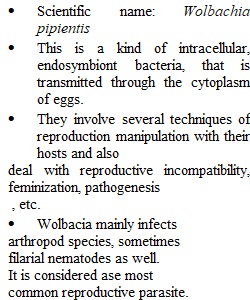


Q Exercise 2 Postlab Instructions: • Below is a list of the resources that you need to complete the Postlab Assignment for Exercise 2. • The correctness and effort of your work determines your grade on this set of activities. • This assignment should be completed individually. Any assignments that have been duplicated or plagiarized (in part or in total) will not be accepted. Because many of you may not have experience with these types of activities, a grading rubric exists for you to use. At the end of this semester you will submit a PowerPoint presentation. Over the course of the semester some of your post lab assignments will ask you to create PowerPoint slides that will become a part of this final Wolbachia presentation. This is the first post lab assignment that includes such slides. Powerpoint Slides: • Your final presentation for this course will include these slides that cover this information. • Refer to the Powerpoint "Style Guide" to earn a better grade! Slide 1: Create a slide with an appropriate title with your name and the date of submission on it. • This title should be descriptive! For example, “Wolbachia Project” tells an audience nothing about the information in the slides. Slide 2: Include only the following: • a description of Wolbachia biology and its prevalence in insect and arthropod species • the overall impact of Wolbachia infection on an insect population Slide 3: Include only the following: • how Wolbachia infection in insect populations may directly or indirectly affect human health (at least one filarial nematode and one viral disease mentioned) Slide 4: Include only the following: • why GSU Armstrong students as a collective are participating in this project • why your individual experience with the project is important Slide 5: Look at page 34 of your lab manual, and present your completed flowchart of the experimental design in a tabular or flow-chart format. Slide 6: Include only the following: • date of collection • time of collection • location of collection • environment (habitat) of collection • method of collection • a photo you took during collection (this can be a photo of your insect, the habitat, a selfie of you collecting, etc) Slide 7: You need to provide references for your work in the proper format using the skills you learned in Exercise 1 (review pages 13-14 (Exercise 1) of your lab manual if you need guidance on how to write your citations). • The PowerPoint Style Guide provides directions for how to do this, and these directions are also listed below. • Create a numbered list of references on final slide. • You need to revisit the slides you've just created (slides 2-6 above) to add small superscript numbers next to information that you found from sources, such as your lab manual or the introductory video you watched for Prelab for this exercise. • Each piece of information that you gathered from a source for your slides should be referenced in this way. • The small superscript number on the slides next to the information should correspond to the numbered source on slide 7 from which you found that piece of information. • Example: o If you wrote something you learned from your lab manual on slide 2 about Wolbachia infection in mosquitoes, please a small superscript "1" by that information on slide 2. o On slide 7, your lab manual should be numbered "1" in your list of resources. Assignment Submission Instructions Save and name your file 1. Report your work as information in 7 MS Powerpoint slides. Details on what each of these slides should include can be found above. 2. Check yourself using the associated rubric (Exercise 2 Postlab PP Assignment Rubric). 3. You may NOT submit Google Slides or any other software equivalent. If you prepare your slides in Google Slides, be sure to download as a MS Powerpoint file before uploading to the postlab dropbox. 4. Save your assignment in the appropriate file format as "Exercise2Postlab" followed by your three initials. (For example, "Exercise2PostlabGJD.pptx") 5. Upload and Submit your MS Powerpoint file to this dropbox (Exercise 2 Postlab: PP Assignment Dropbox). You are now done with the module for Exercise 2. Questions? If you have a question about the tasks in this module, please submit it to the Questions for the Professor discussion forum under Communication > Discussions.
View Related Questions